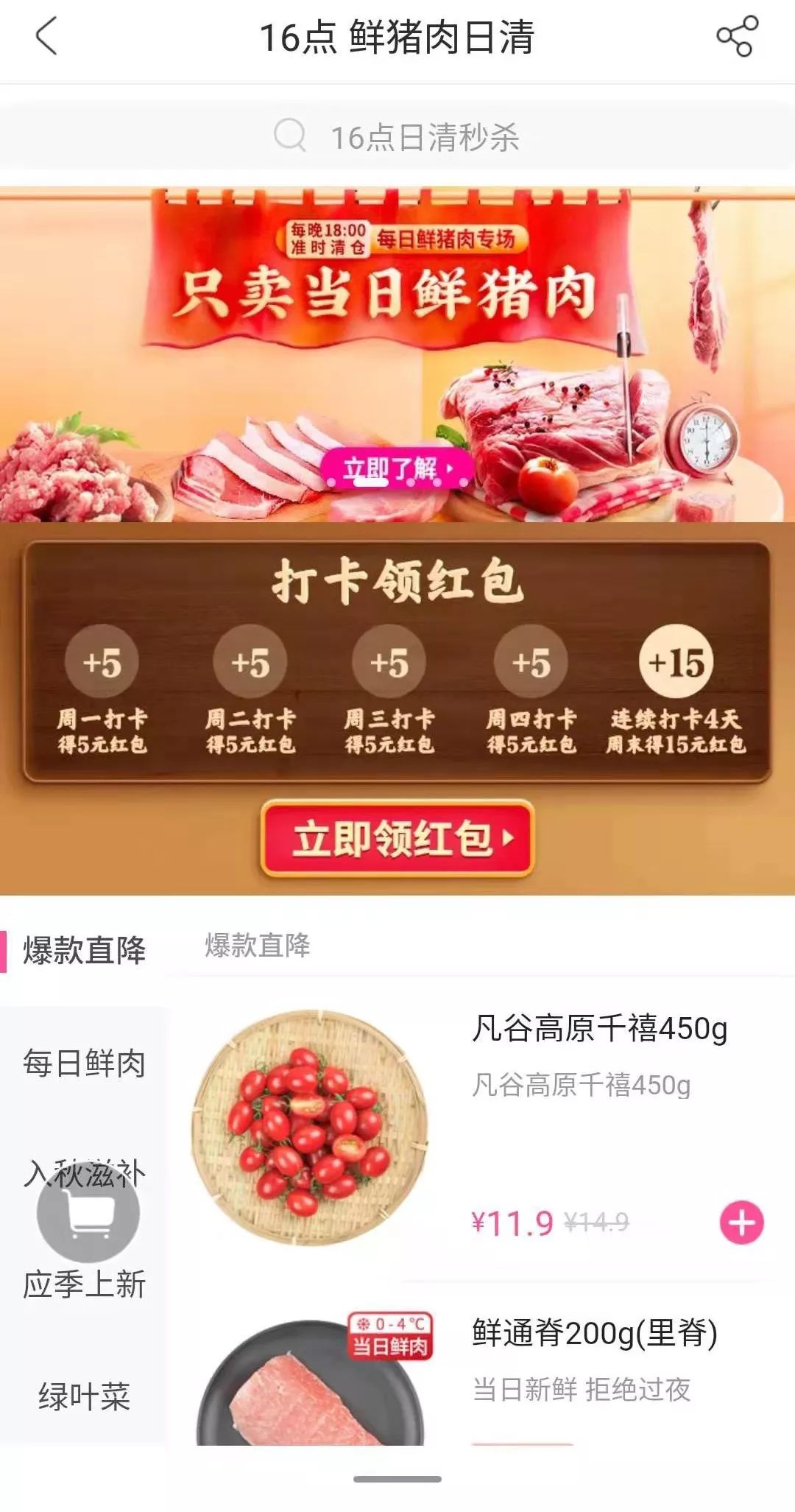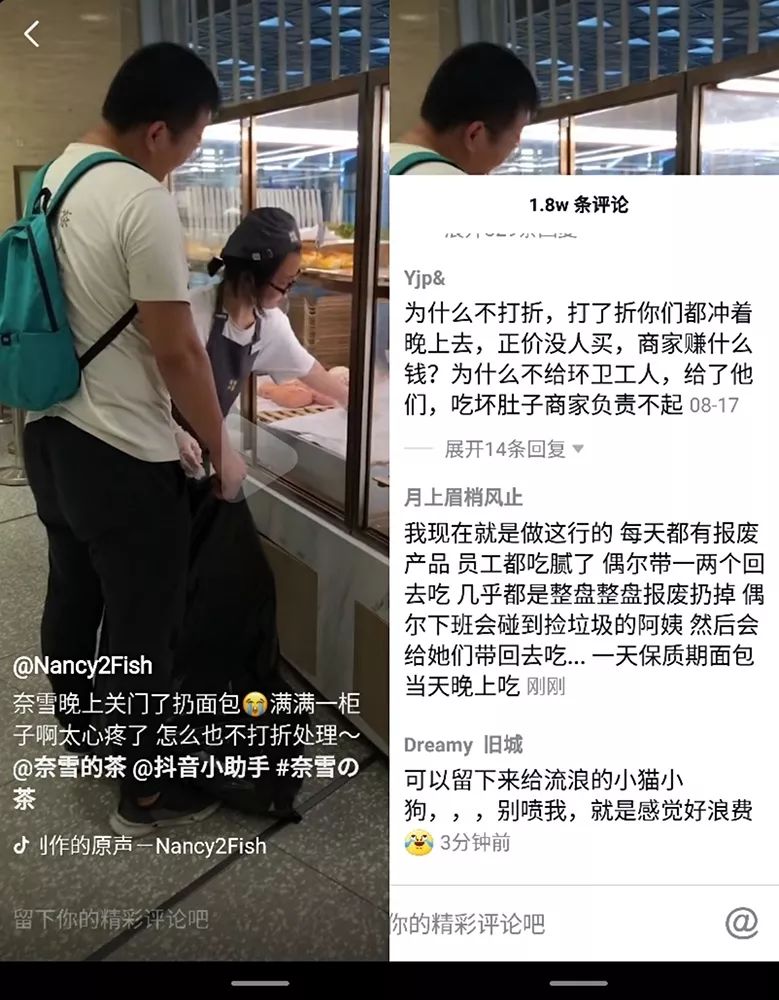Don’t you feel fresh, I want me to feel fresh.
Editor’s note: This article is from WeChat public account “Retail boss internal reference” (ID: lslb168), the author Sun Yuan. The original title “”Not overnight” has little value for fresh and catering.”

It makes you feel fresh and more important than really fresh.
Core Guide:
1. Is the product “not overnight” worthy of its name?
2. Where are the overnight products that have not been sold?
3. Why do products prefer to be thrown away and not discounted?
When the Chinese are in elementary school, they will pass the “Ideology and Morality” course to know a classic stem:
In the mid-1930s during the US economic crisis, the farmer’s capitalist would rather pour the unsold milk into the Mississippi River and would not give it to the poor for free.
This classic event, which was regarded as “inhumanity” of capitalism, was written into our primary and secondary school textbooks. The economic phenomenon behind it is rarely understood in the classrooms of primary and secondary schools—maintaining the commodity price system, minimizing losses, achieving long-term balance between supply and demand, and the spread of corporate social responsibility.
“I would rather not throw away the price without giving away.” Such a case is not uncommon in daily life, mainly in the current Chinese fresh circulation and catering service industry.
However, when we learned deeply, we found that most of this was not because the goods were not sold, but because the whole industry was aligning with a somewhat “clean” standard – food was not overnight.
– 1 –How much is the “no overnight” trick?
I don’t know when to start, “not overnight” has become the entire fresh and catering industry, and is measuring the core standard of commodity freshness.
“Not overnight”, based on the definition of most players on the market today, that is, the sale time of goods is no more than 24 hours. Products that are labeled as “not overnight” are usually characterized by common, short-term, and fast-depreciation.
Among them, fresh produce, especially vegetables. Meat and baking are also common types.
From the box horse day to the day, to the beauty of the “daily fresh”, and then to the fresh legend, not only offline sales as the core of the store, the community store hit the “Nissin” sign, this ” The wave of not overnight, has already blown to the line.
(A fresh e-commerce platform hits the banner of “sell only fresh meat of the day”)
It’s true that the “not overnight” signboard is actually a lot more fresh than the new fruit and vegetable store that hasn’t been on the door for a few days, but the simple trick behind the three words is less of a concern.
First, why not be overnight?
People who have been fresh know that from the seedling quality, planting method to picking time, logistics and transportation, warehousing, packaging, and tally, the factors affecting freshness are multiple. It is not a simple time. Covered.
Taking a news from a few days ago as an example, truck driver Liu Shifu started from Hubei on August 10, transporting a car of flowers, passing through Hubei and Hunan, and taking the green channel of fresh agricultural products (no need to pay) Tolls), but when I approached Nanning in the evening of the 12th, the peanuts were dried because the water was too hot on the road, so I was charged a toll of 1,000 yuan.
Behind the ridiculous news, it is the hardship of fresh agricultural products in the circulation of the supply chain. The multiple factors and links in the early stage constitute the appearance of the fresh products on the shelves, not only in the sales cycle of goods. All in one fell swoop, and the shelf life of most commodities is obviously more than one day, forcing the fresh products of good quality to be taken off the shelf, just to cater to “not overnight”, is a waste of resources.
Before returning to the shelves, how many days have you been in the transportation of these fresh foods that are only sold on the shelves for one day? How many days have you been in the warehouse? It should be far more than “not overnight”.
Secondly, if you haven’t sold out, you’re limited to the “not overnight” item, and where did you go last?
The ideal state of “not overnight” is the commodity clearing, to this extent, one needs accurate sales estimates, and the other requires store products to maintain a stable high sales rate.
In terms of sales forecast, each family has experience, and we don’t do much research. Maintaining a stable high sales rate is on the one hand reducing inventory and on the other hand promoting sales.
One of the most notable strategies for promoting sales without “overnight” is time-sharing discounts. For example, the money aunt who doesn’t buy overnight meat, the store starts at 19:00, and every half an hour, until the free delivery, but this discount method also sparked debate about whether it affects the sale of the original price.
Other merchants have chosen a more direct way – directly off the shelf, but most merchants are indifferent to the way the merchandise is removed.
For example, the box-horse carrot “tag door” event, “澎湃 News” first burst, the outside reaction is fierce, I think you are “bright-eyed” box horses are also playing these. However, who ever thought about it, the carrot that is still fresh is “innocent”? It is a qualified carrot that can still be eaten. It doesn’t matter if you can be sold in the package any day. This lack of scientific basis of “not overnight cleanliness”, the words of ugly words, the nature of the mind behind, are similar to racial and personality discrimination. The same person, is the skin blacker than the white one?
Of course, this is not a change in one or two sentences. Anyway, the fresh food is still fresh, and the current industry and consumer views will not be reinstated. Moreover, it is not a good way to get a good reputation.
Shaking a piece of video about the “Nai Xue の tea” after the end of the business, the video of the whole cabinet bread directly discarded 8.6w praise and 1.8w comments. There is no shortage of strong questioning voices such as “Why don’t you give a discount, don’t give it to someone you need”, and “Waste food.”
Near Snow destroyed the unsold bread on the day (picture source vibrating @Nancy2Fish)
Under the estimation of sales volume, I always emphasize that my products are fresh “not overnight”, and the remaining products that have not been sold are a pity, leaving a signboard, which is a hot potato.
Third, consumers really care about “not overnight”?
The core of “not overnight” is to allow consumers to enjoy the freshest products at any time, but behind this freshness is no longer stocked.
Otherwise, buy vegetables that are not overnight, and put them in the refrigerator. What is the meaning of “not overnight”?
But in the Chinese consumer behavior model, it is difficult to do this. The main vegetable meat that is not overnight is directly aimed at family dining scenes. As we all know, Chinese food is rich in materials, and it is difficult to buy a meal for a small family.
Sometimes, buying fresh ones may be to stay in your own refrigerator for a few more days.
For such consumers, there is no need for overnight, but the decision is not just needed, because not overnight, it must be fresher than the new one.
– 2 –Behind the “not overnight” is the issue of economics
At present, it seems that commodities are not overnight, and more is to quantify them into a concept and a signboard.
As more and more businesses enter the system, there are no businesses that meet the “no overnight” standard, and they always feel that they are missing something.
This is also why, online and offline players are obsessed with embracing the “good commodity day” standard, whether it is true or not, always have to put it up. And consumers’ perception of whether it is overnight is only a small date label.
Without discounts and no gifts, it is the last insistence of merchants on their own commodity price system and brand tonality. If the sale is discounted, the box horse may also be the same as the money aunt shop, the fate of the aunt and aunt.
A lot of people will think that even if they don’t sell at a discount, the goods they take off are used for public welfare, and they can establish a corporate social image. Isn’t it good?
We will not talk about the human and material expenditures of docking public welfare institutions, commodity transportation, etc., which must be greater than the cost of direct destruction. We must know that zero loss is a dream that every enterprise can’t do, but it can’t be done. I am used to the store’s loss and even turn a blind eye.
This means that every business that does not have overnight products will gradually approach the critical point of supply and marketing balance through the sales estimates and sales promotion mentioned above, and try to minimize the loss.
With what you want to do to eliminate it, how can you do charity? Destruction with a single record loss is undoubtedly the optimal solution.
From another angle, taking the clothing industry as an example, the backlog of inventory, even if the discount is sold, must also be cut and processed, not just to maintain the brand image and price system?
In the case of luxury Burberry, it is reported that it destroyed 28.6 million in 2017.There are many new items of clothing, jewelry, perfumes, etc.
The brand does this, it is nothing more than not wanting the goods to be discounted, rotten streets, and thus self-depreciation. Destruction is the simplest and least expensive option.
In fact, although it does not mainly affect the fresh-keeping field overnight, its significance is undoubtedly more important for the current sale of goods such as baking.
The difference is that the baking products are shorter from the time of manufacture to the sale of the shelves, and most of their life cycle lies in the shelves.
The life cycle of fresh food sales began from the moment when the branches were removed, and the link before the sale was basically determined.
In addition, in the offline scene, the freshness of fresh produce can be easily distinguished by the senses, which is a more direct and decisive factor than the date number.
There is no doubt that the simple concept of not being overnight can be recognized by consumers in a short period of time, and is inseparable from the continuous improvement of the efficiency of the fresh food supply chain in recent years. Although it is still the easiest way for businesses to pursue efficiency, it is still the core of the community’s pursuit of efficiency.
Maybe in the near future, with the further deepening of the digital supply chain, the fresh platform can really achieve “no overnight” from the field to the table.

